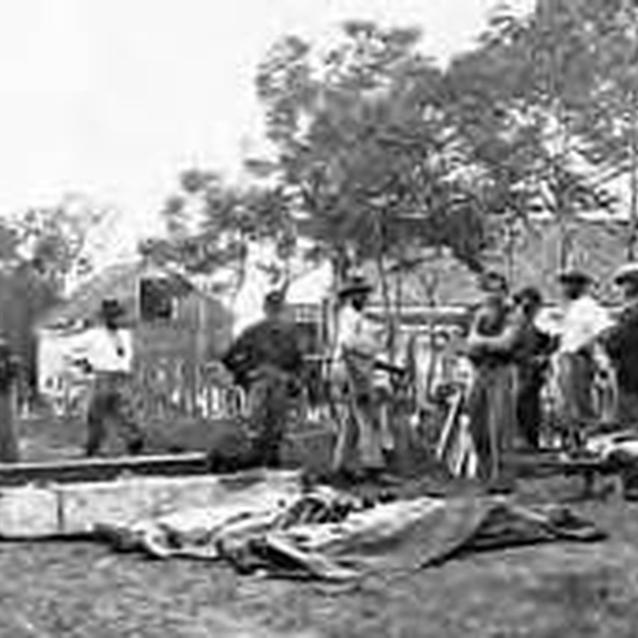During the Civil War, soldiers that succumbed to wounds or disease were typically buried close to where they died. If their name was known, their grave could be marked with whatever materials were present, more often than not wooden planks. For Federal soldiers who perished in and around Vicksburg in 1863, their final resting place would be the Vicksburg National Cemetery.

Established by an act of Congress in 1866, Vicksburg National Cemetery encompasses 116 acres of land that was manned by the extreme right of Maj. Gen. William T. Sherman's XV Army Corps during the Siege of Vicksburg.
Following the cemetery's creation, extensive efforts were made by the War Department to locate the remains of Union soldiers originally buried throughout the southeast in the areas occupied by Federal forces during the campaign and siege of Vicksburg - namely, Arkansas, Louisiana, and Mississippi. However, by the time of these re-interments many of the wooden markers had been lost to the elements, and identification of many of the soldiers was rendered impossible.
Others who died during the Federal occupation of Vicksburg were buried at various points in the Vicksburg vicinity prior to the cemetery's establishment. Record-keeping was haphazard under wartime conditions, and the locations of graves were often lost.
Following the Civil War, the U.S. Army located and exhumed the remains of 300,000 Union soldiers buried in the South, re-interring the remains in national cemeteries throughout the country. Nationwide, 54% of the number of corpses that were re-interred was classified as "unknown." At Vicksburg National Cemetery, 75% of those that were buried were unidentified. Rounded, upright headstones mark the graves of the known soldiers, while small, square blocks, etched with a grave number only, designate the burials of those who couldn't be identified. A few graves are marked by non-government issued headstones. Though intended for Union war dead only, in the late 1860s two Confederates were mistakenly buried in Section B of the cemetery (Private Reuben White, 19th Texas Infantry; Sergeant Charles B. Brantley, 12th Arkansas Sharpshooters Battalion).
Confederate dead from the Vicksburg campaign, originally buried behind Confederate lines, have now been re-interred in the Vicksburg City Cemetery, in an area called "Soldiers' Rest." Approximately 5,000 Confederates have been re-interred there, of which 1,600 were identified.
The first national cemeteries established by Congress in 1862 were to provide a burial place for "soldiers who shall die in the service of the country." At the time, this provision applied only to those who had perished serving in the Union army during the Civil War. However, following the Spanish-American War, veterans of later wars became qualified for burial in national cemeteries and approximately 1,300 veterans of conflicts subsequent to the Civil War have been interred in Vicksburg National Cemetery. Over the years there have been a scattering of other burials, including veterans who served during peace time, former cemetery superintendents and their families, wives and children of veterans, government workers, and a few civilians of the past century.
Vicksburg National Cemetery has been closed for burials since May 1961, except to those individuals who had reserved space for interment prior to that time.
Until 1933 Vicksburg National Cemetery was under the jurisdiction of the War Department At that time that administration of the cemetery was turned over to the Department of the Interior's National Park Service. The last cemetery superintendent, Randolph G. Anderson, retired in 1947, and supervision of the cemetery became the added responsibility of the superintendent of Vicksburg National Military Park.
The names of the soldiers interred in Vicksburg National Cemetery have been compiled from the original cemetery ledgers (and are available online). The three-volume set contains only basic information about each known veteran, recorded at the time of re-interment. Although the handwritten pencil entries are in remarkable condition, many do contain inaccuracies and/or only partial information about the soldier. The listings identify information as it was recorded in the Vicksburg National Cemetery ledgers.
Last updated: February 4, 2015
